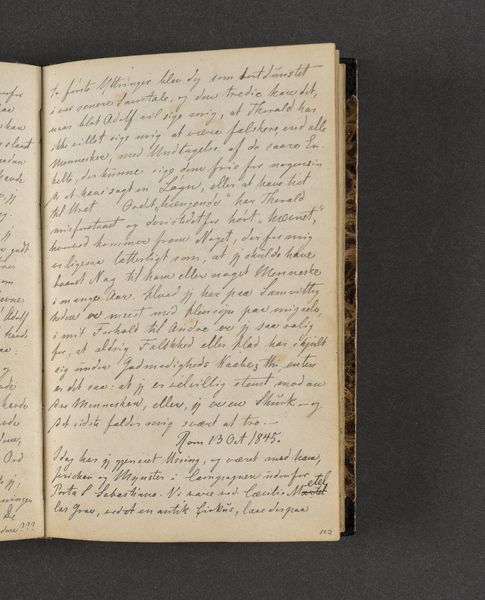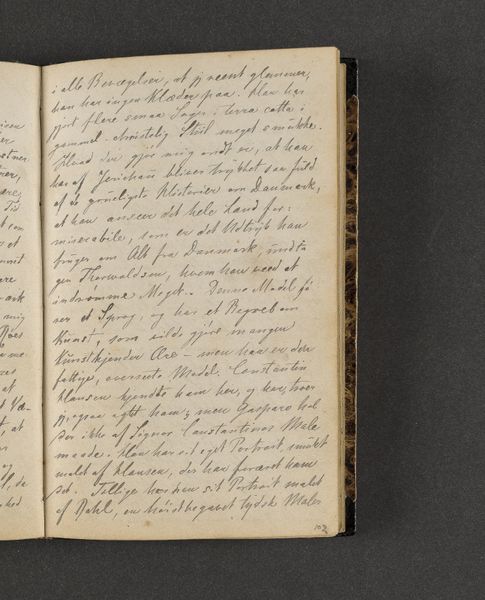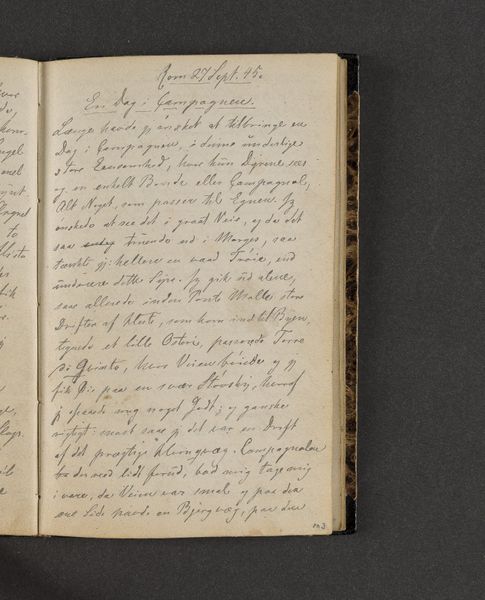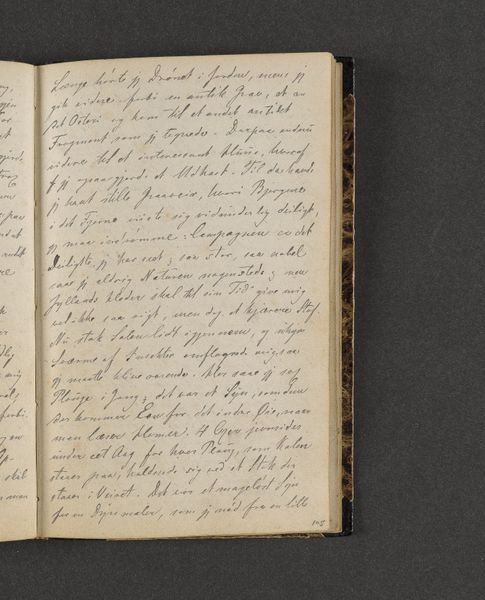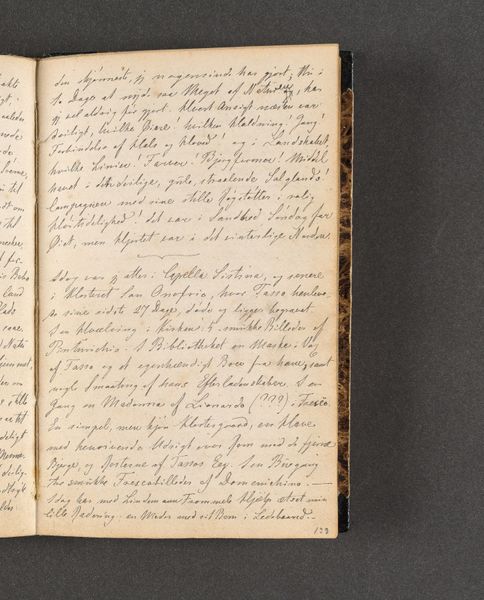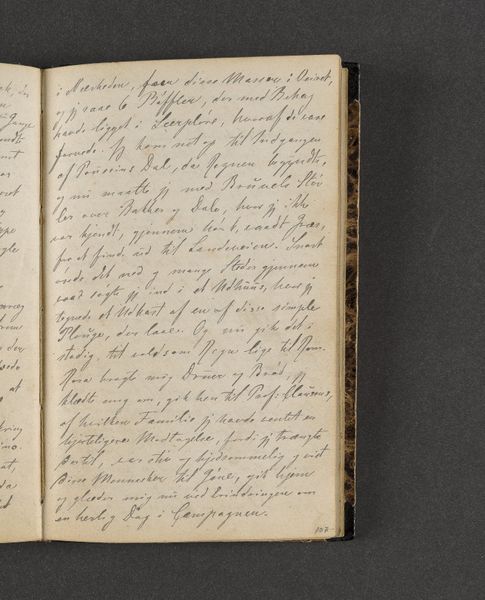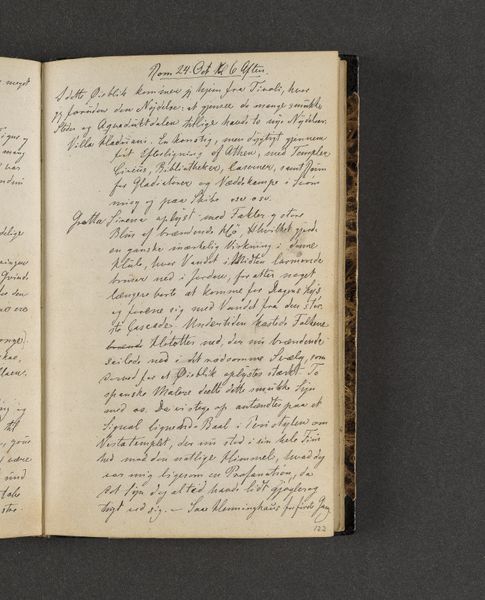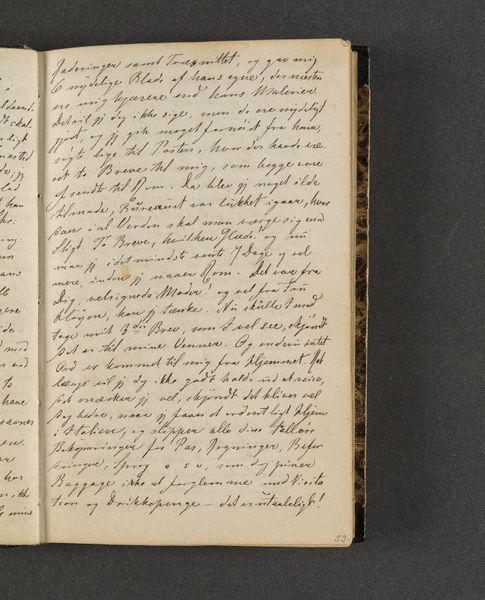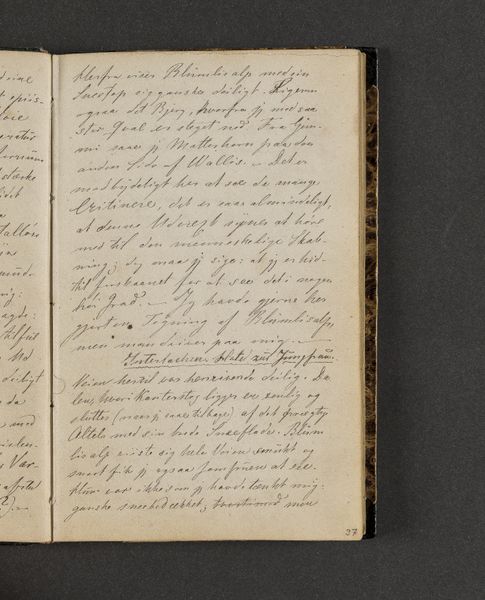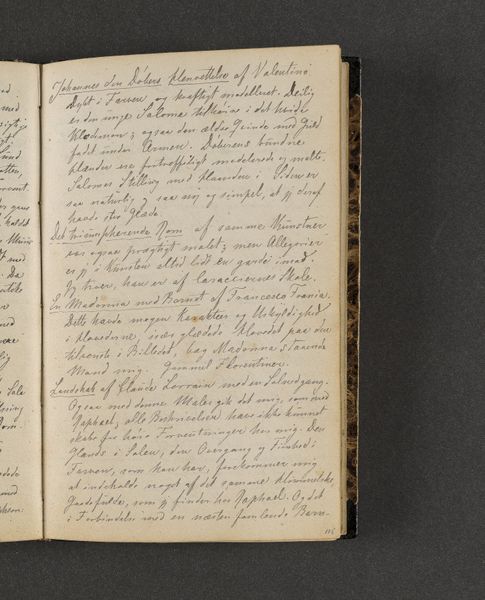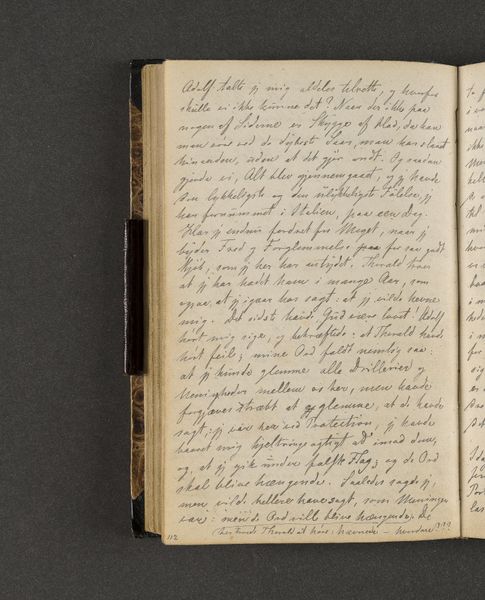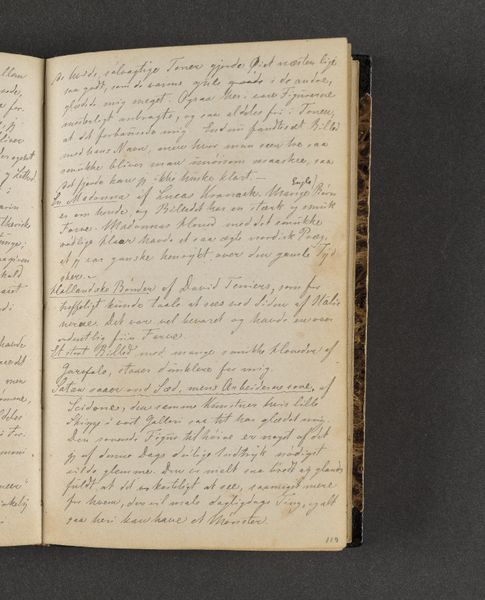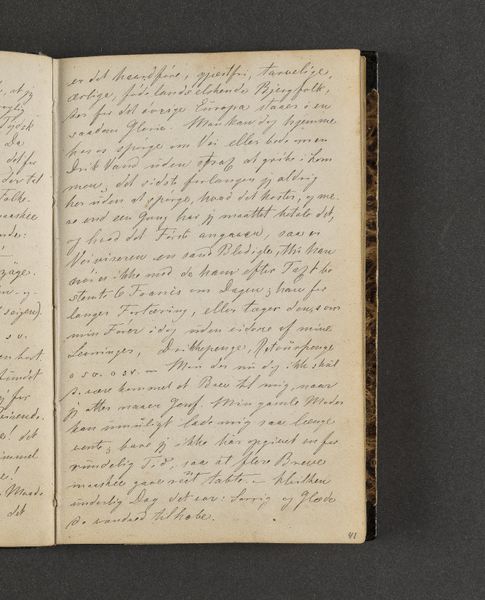
drawing, paper, ink
#
drawing
#
paper
#
ink
Dimensions: 161 mm (height) x 103 mm (width) x 11 mm (depth) (monteringsmaal)
Curator: Welcome. Before us is “Rejsedagbog,” or "Travel Journal," by Johan Thomas Lundbye, dating back to 1845. It's an intimate piece rendered in ink on paper. Editor: My first impression? It feels… weighty, despite its small size. The dense, handwritten script, almost illegible to our modern eyes, creates a visual texture that hints at secrets and stories deeply considered. Curator: Absolutely. Lundbye's journals are more than just records; they're a window into the artist’s inner world. He was a fervent nationalist and deeply romantic soul. The act of journaling itself, particularly during travel, held significant cultural meaning at the time. Editor: Indeed. Diaries were more than repositories of daily events. They served as stages to enact the drama of the self, and contained layers of symbolism beyond personal use. The meticulous handwriting could, I'd argue, be seen as a deliberate act, lending importance to even mundane observations. Each stroke a signifier. Curator: The script is his tool to create something solid, tangible – a physical record of fleeting experiences and thoughts in a changing world. What do you infer from the content itself? It's only partially decipherable to me... Editor: Without knowing Danish of the 1840s, it's difficult. Yet even illegible, the visual density suggests introspection, a mind grappling with complex ideas, emotions. Notice the darker patches of ink indicating edits or corrections – signs of intense, active thinking and revising. This is where the iconographic value sits. Curator: I’m fascinated by that interaction of intention and accident on the page; the raw expression which is nonetheless carefully wrought. Editor: Yes. Lundbye leaves us with both intimate reflection and a carefully considered image of self and place, and perhaps invites each viewer to consider how we, too, curate meaning and memory through language. Curator: Very well said. A journey inwards transcribed in an object which itself contains more paths than its maker first envisioned.
Comments
No comments
Be the first to comment and join the conversation on the ultimate creative platform.
